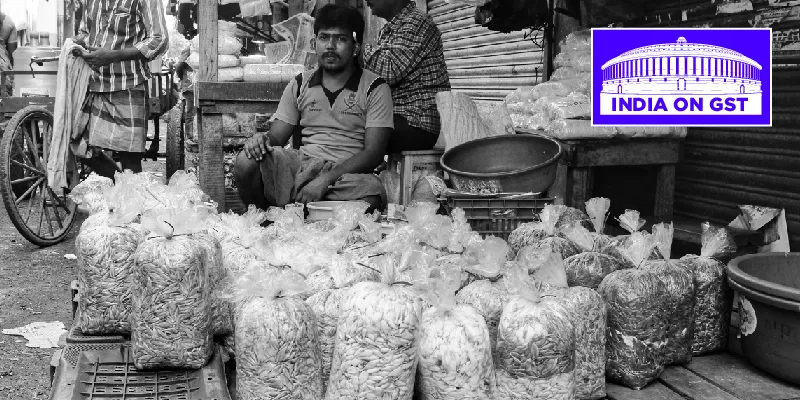5 basic things about GST everyone should know
The government is preparing for a July-1 launch for GST, which will change the concept of levy of indirect taxes. With a little more than two months to go, it is important businesses understand this levy and start identifying whether and how it applies to them.
If you are a business, it is nearly certain you deposit some tax other than income tax. It could be in the form of service tax, excise duty, VAT or some version of custom duty. These taxes are called indirect taxes. Nearly all of these taxes will now be replaced with GST.

But the implementation of GST is not merely a change in tax. GST is an overhaul in the way in which indirect taxes will ‘levy’. Currently, excise duty is levied on manufacture, VAT is levied each time goods change hands and value is added to the product. CST (Central Sales Tax) is charged when goods move between states. This way a finished product can have excise duty, VAT, CST added to its cost before reaching its final consumer. All of these have a different ‘point’ of tax levy. These different taxes will now give way to GST.
When is GST levied?
The most important thing about GST then is its point of levy. Under GST, point of tax levy is ‘supply’. What constitutes a supply has been defined in the GST Act. Supply means sale of goods and services. A supply of goods and services can take place even without an actual sale. Supply will also include, transfer, exchange, and barter, rental, lease and also a supply made to an agent or to a branch. So if you are a business, engaged in any of the above, GST will replace all taxes paid by you on purchases, and mandate you to levy GST on your supply. In this context the government may notify some services & goods, which will not be considered a supply and hence will not attract GST. So the first step would be to identify if your business has made a supply.
Types of GST
Once it has been established that your business has made a supply, the next step is to find out whether it is an intra-state or an inter-state supply. If the origin state is different from the destination State, it is considered an inter-state supply. This is the reason why GST is also called a destination-based tax. Those who make inter-state supplies have to mandatorily register for GST. Most supplies are likely to be taxed at the rate of the destination state. Supplies made outside India would not attract any GST, however GST registration may still be required for these supplies. Intra-state sales will attract Central and State levy, called SGST and CGST. And inter-state sales will attract IGST, which is likely to be a sum total of CGST and SGST. IGST will also be levied on imports.
Who should prepare for GST?
If you are an existing registrant under VAT or service tax or excise duty, you should roll over your registration to GST. Those with turnover less than Rs 20 lakh (Rs 10 lakh for North East states) do not have to mandatorily register for GST. This limit, though, is not to be considered if the business is involved in making inter-state transactions. GST registration is mandatory for them.
If you have a website from where supply of goods or services takes place, GST registration will be mandatory for you. GST also applies to an ‘input service distributor’. Input service distributor means a head office that receives billing for services received at branches and later on it sends apportions to branches. Such ISDs also have to mandatorily register for GST.
GST applicability for various businesses
As a trader, you may be already registered under VAT, so you must register for GST. GST will allow you to set off tax paid at earlier stages for payment of GST on supplies you make. Manufactures also stand to benefit by registering, as they can now adjust tax paid on inputs against GST on outputs. So far as service providers are concerned, many of the existing rules will flow to GST. However, GST on services would now be levied by both State and centre. Taxes would flow to the place of consumption and will be received by the consuming state. Service providers will be able to claim set-off of tax paid on input goods, which was earlier restricted to only input services. Some services, such as doctors, para-medical services, and education services earlier exempt from service tax are likely to be exempt under GST as well.
Should you voluntarily opt for GST registration?
Many small businesses that are below the turnover threshold and do not make inter-state supplies have the option to register voluntarily. If your buyers are GST compliant it helps you are too. This way, your buyer will be able to take credit of taxes you pay for your inputs. The GST act has laid down that if registered buyers make purchases from unregistered sellers, they will have to do full GST compliance towards tax payment and return filing on behalf of the unregistered seller. With every buyer and seller on board, GST will create a sort of a club of its own with benefits, but at the same time come with the cost of being compliant as well adapting technology as means to do business. Both bets worth the investment.
(Archit Gupta is the Founder and CEO of ClearTax)
In the run-up to one of the biggest tax reforms in the country, the market is abuzz with new rules and guidelines about the Goods and Services Tax (GST). How will GST really impact your business? How will your financial reporting change? Find out the answers to all this and more, directly from industry and tax experts who will share their expertise on YourStory’s new series ‘India on GST’.
(Disclaimer: The views and opinions expressed in this article are those of the author and do not necessarily reflect the views of YourStory.)







